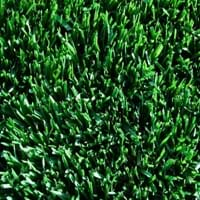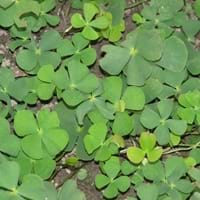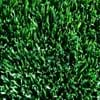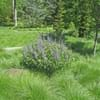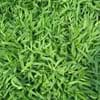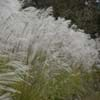Life Span
Perennial
Perennial
Origin
World/Pandemic, North America, Europe
Australia
Types
Alene, Barblue, Caliber, Canterbury
Not Available
Habitat
Cultivated Beds, Lawn, meadows
along watercourse, Banks, Lake Sides, Near ponds
USDA Hardiness Zone
3-10
7-11
Sunset Zone
A1, A2, A3, 1a, 1b, 2a, 2b, 3a, 3b, 4, 5, 6, 7, 8, 9, 10, 11, 14, 15, 16, 17, 18, 19, 20, 21, 22, 23, 24
21,22
Habit
Mat-forming
Spreading
Minimum Width
Not Available
Flower Color
Purplish Green
Not Available
Flower Color Modifier
Bicolor
Not Available
Fruit Color
Not Available
Not Available
Leaf Color in Spring
Green, Blue Green, Gray Green
Light Green, Dark Red
Leaf Color in Summer
Light Green
Light Green, Dark Red
Leaf Color in Fall
Green, Blue Green, Gray Green
Light Green, Dark Red
Leaf Color in Winter
Green, Blue Green
Light Green, Gray Green, Dark Red
Leaf Shape
Narrowly linear
Round
Plant Season
Spring, Summer, Fall
Spring, Summer, Fall
Sunlight
Full Sun, Partial Sun, Partial shade
Full Sun, Partial Sun
Growth Rate
Fast
Very Fast
Type of Soil
Clay, Loam
Loam, Sand
The pH of Soil
Acidic, Neutral
Acidic, Neutral, Alkaline
Soil Drainage
Well drained
Poorly Drained
Bloom Time
Summer
Not Available
Tolerances
Not Available
Wet Site
Where to Plant?
Ground
In Water
How to Plant?
Seedlings, Sod
Spores
Plant Maintenance
Medium
Medium
Watering Requirements
Water frequently while growing
Keep immersed in water
In Summer
Lots of watering
Lots of watering
In Spring
Moderate
Moderate
In Winter
Average Water
Average Water
Soil pH
Acidic, Neutral
Acidic, Neutral, Alkaline
Soil Type
Clay, Loam
Loam, Sand
Soil Drainage Capacity
Well drained
Poorly Drained
Sun Exposure
Full Sun, Partial Sun, Partial shade
Full Sun, Partial Sun
Pruning
Remove damaged leaves, Remove dead branches, Remove dead leaves
Remove damaged leaves, Remove dead branches, Remove dead leaves
Fertilizers
Nitrogen
All-Purpose Liquid Fertilizer
Pests and Diseases
Dollar spot, Rust, Summer Patch
Not Available
Plant Tolerance
Drought
Drought
Flowers
Insignificant
None
Flower Petal Number
Single
Not Available
Foliage Texture
Fine
Medium
Foliage Sheen
Matte
Matte
Allergy
Cough, Itchy eyes, Runny nose
Not Applicable
Aesthetic Uses
Ground Cover
Showy Purposes, Water gardening
Beauty Benefits
Not Available
Not Available
Environmental Uses
Erosion control
Air purification
Medicinal Uses
Not Available
Not Available
Part of Plant Used
Leaves
Seeds, Spores
Other Uses
Used in lawns and turf
Decoration Purposes, Starch
Used As Indoor Plant
No
No
Used As Outdoor Plant
Yes
Yes
Garden Design
Lawns and Turf
Container, Water Gardens
Botanical Name
POA pratensis
MARSILEA mutica
Common Name
Kentucky Bluegrass
Banded Nardoo, Banded Water Clover, Pepperwort
In Hindi
Kentucky Bluegrass
Pepperwort
In German
Kentucky Bluegrass
Pepperwort
In French
Kentucky Bluegrass
Pepperwort
In Spanish
Pasto azul de Kentucky
Pepperwort
In Greek
Κεντάκυ Bluegrass
Pepperwort
In Portuguese
Kentucky Bluegrass
Pepperwort
In Polish
Wiechlina
Pepperwort
In Latin
Kentucky Bluegrass
Pepperwort
Phylum
Magnoliophyta
Charophyta
Class
Liliopsida
Equisetopsida
Family
Poaceae
Marsileaceae
Clade
Angiosperms, Commelinids, Monocots
Angiosperms, Eudicots, Rosids
Importance of Kentucky Bluegrass and Pepperwort
Want to have the most appropriate plant for your garden? You might want to know the importance of Kentucky Bluegrass and Pepperwort. Basically, these two plants vary in many aspects. Compare Kentucky Bluegrass and Pepperwort as they differ in many characteristics such as their life, care, benefits, facts, etc. Every gardener must at least have the slightest clue about the plants he wants to plant in his garden. Compare their benefits, which differ in many ways like facts and uses. The medicinal use of Kentucky Bluegrass is Not Available whereas of Pepperwort is Not Available. Kentucky Bluegrass has beauty benefits as follows: Not Available while Pepperwort has beauty benefits as follows: Not Available.
Compare Facts of Kentucky Bluegrass vs Pepperwort
How to choose the best garden plant for your garden depending upon its facts? Here garden plant comparison will help you to solve this query. Compare the facts of Kentucky Bluegrass vs Pepperwort and know which one to choose. As garden plants have benefits and other uses, allergy is also a major drawback of plants for some people. Allergic reactions of Kentucky Bluegrass are Cough, Itchy eyes and Runny nose whereas of Pepperwort have Not Applicable respectively. Having a fruit bearing plant in your garden can be a plus point of your garden. Kentucky Bluegrass has no showy fruits and Pepperwort has no showy fruits. Also Kentucky Bluegrass is not flowering and Pepperwort is not flowering . You can compare Kentucky Bluegrass and Pepperwort facts and facts of other plants too.
